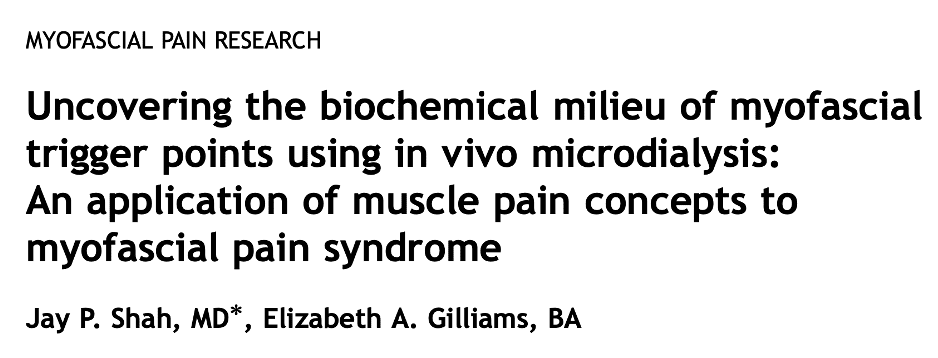The Trigger Point
A trigger point is something that you will deal with in everyday clinical practice when treating patients with musculoskeletal pain presentations. Unfortunately, the myofascial trigger point is often an overlooked contributor to chronic myofascial pain and central sensitisation.
So what is a trigger point?
As defined by Travel & Simons a trigger point is a “A hyper irritable spot within a taught band of skeletal muscle that is painful on compression, stretch, overload or contraction of the tissue which usually responds with a referred pain that is perceived distant from the spot” (Simons DG, Travell J. 1999)
Patients will typically describe symptoms of:
➡️ Aching
➡️ Heaviness / tiredness
➡️ Feeling of fatigue
➡️ Muscle stiffness
➡️ Local and Radiating pain
➡️ Deep non-specific
➡️ Muscle weakness
➡️ Reduced ROM
➡️ Tender to pressure
What can be the cause of a trigger point?
- Trigger points can develop with or without damage
- Mechanical and metabolic
- Mechanical stress:
- Postural
- Repetitive activity or sustained overuse
- Acute injury or trauma
- Chronic injury / pain
- Psychological and emotional stress (Menses & Simons, 2001)
Why are they painful?
- Muscle contractures can lead to compression on local blood vessels, this can lead to biochemical changes at the site of the MTrP which further influences a change in tissue pH and lowered nociceptor firing threshold.
- Painful MTrPs activate muscle nociceptors that, upon sustained noxious stimulation, initiate motor and sensory changes in the peripheral and central nervous systems. (Shah et al 2008)
- Both active and latent trigger points can have negative effects on muscle function such as weakness, inhibition, increased motor irritability, spasm, and altered motor recruitment. (Lucas et al. 2004, 2010)
But what happens with persistent chronic myofascial pain?
I bet you have some patients who are always in pain and they are really sensitive to touch, pressure or movement, even outside the initial area of pain or injury, and treatment may only provide temporary relief?
So we ask ourselves “What is the reason for this?”
Trigger points provide nociceptive input into the dorsal horn, therefore the trigger point functions as a persistent nociceptive source that can lead to heightened sensitivity in the central nervous system. This can potentially contribute to central sensitisation.
What is a Central Sensitisation?
As defined by the IASP “Central Sensitisation is the increased responsiveness of nociceptive neurons in the central nervous system to their normal or subthreshold afferent input.” Essentially meaning that stimulus that would not normally be noxious is experienced to be painful such as touch and light pressure, and noxious input that should be painful is amplified to be experienced as much more severe pain.
Sound familiar??
- Central Sensitisation can lead to increased sensitivity outside of the initial area of pain. With central sensitization, all structures / tissues that are innervated by that nerve root level can become sensitized with persistent pain, this includes, muscle, skin, ligaments, bursae, connective tissue, etc. This is a result of structural and functional changes to the central nervous system.
- MTrPs are a very common source of persistent nociception and sensitization that often results in Spinal segment sensitisation, hyper-facilitated segments, somato-visceral effects, and chronic myofascial pain.
And of course, it is not that simple… there are many other factors that can contribute to pain sensitivity and central sensitisation. In fact, recent findings compel us to look at the phenomena of MPS and MTrPs as a type of spectrum disorder of sensitization that manifests clinically by varying symptoms and signs. (Shah & Srbely)
Want to know more? Here are some interesting articles for further reading. These and many more can be found in our free research library on our website HERE



👉 To take your knowledge to another level and learn from the researchers themselves in the most highly valuable 2 day workshop register HERE for the central sensitisation and myofascial pain workshop with Dr Jay Shah and Dr John Srbely where you will learn and integrate important palpation skills and psychophysical quantitative sensory testing techniques with various needling and electrical stimulation techniques to treat painful MTrPs and sensitized spinal nerve segments more effectively.





